Baby geese, known as goslings, are undoubtedly some of the most adorable creatures in the animal kingdom. With their soft downy feathers, tiny fluffy bodies, and adorable waddle, baby geese easily enchant and charm just about anyone with their incredible cuteness. Whether they are splashing in the water, nibbling at the grass, or simply cuddling up with their siblings, these precious little bundles of joy exude a special charm that is simply irresistible. Dive in to enjoy some feathery cuteness with 11 pictures and 10 incredible gosling facts!
1. There Are Two Main Types of Baby Geese
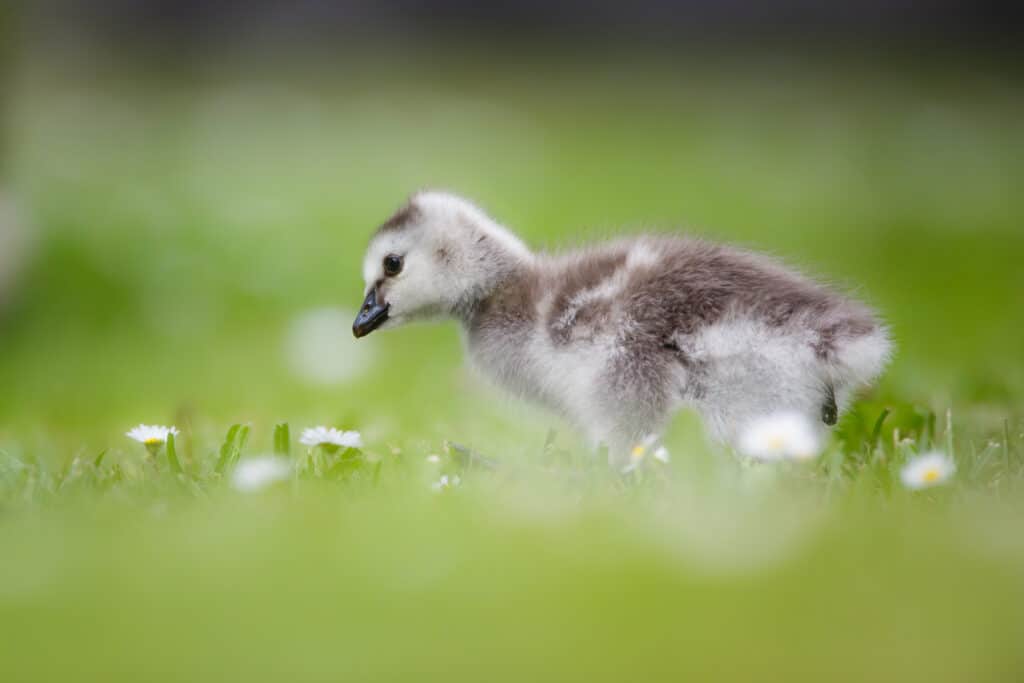
Barnacle
goslings (
Branta leucopsis) belong to the black geese genus,
Branta.©Pim Leijen/Shutterstock.com
Although there are many birds that are called “geese”, several are not actually geese at all! For example, the Egyptian goose (Alopochen aegyptiaca) is actually a shelduck. Members of the Anatidae waterbird family, geese are categorized into just two different genera. The first, Branta, consists of the black geese, while the second, Anser, includes the gray geese and white geese. Various types of geese live all over the world and help to control populations of insects and aquatic plants. A group of geese is called a gaggle, and baby geese are called goslings.
2. Baby Geese Are Soft and Yellow
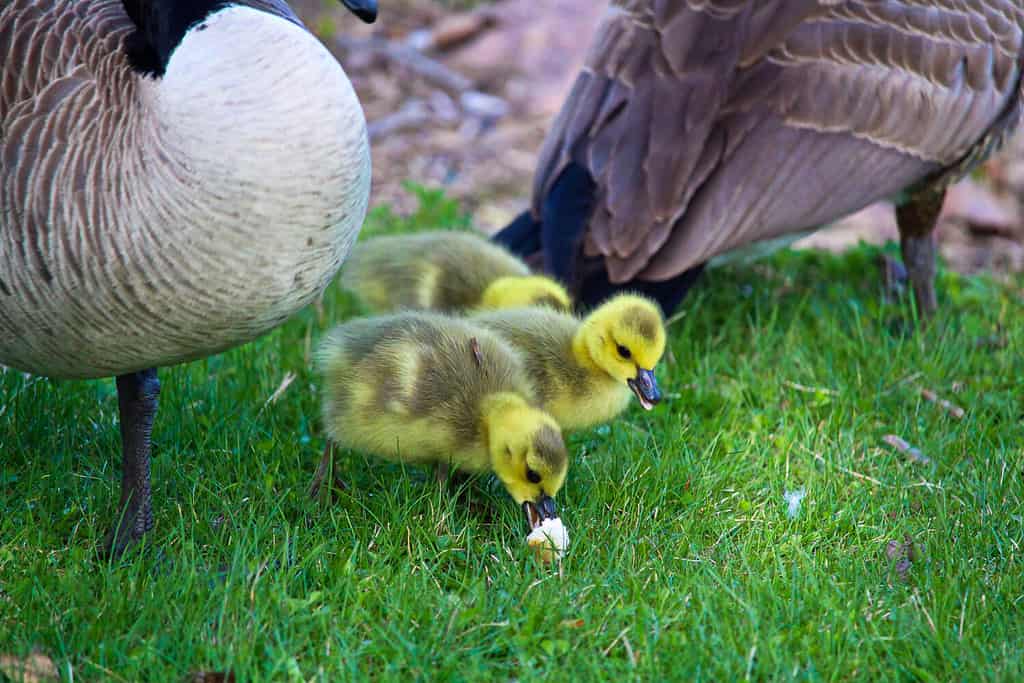
Baby goslings graze for food much like their parents.
©Amelia Martin/Shutterstock.com
When goslings are born, they have fairly well-developed bodies. These adorable little baby geese may look like ducklings or signets in some ways, but they’re typically lighter in weight and have a more yellow hue. Instead of typical goose feathers, goslings have soft fluffy down that is a yellowish color. As they get older, the yellow transitions into a light gray or olive green color toward the tip of their feathers. In addition, goslings have a larger build, with a long neck and a triangular-shaped bill, whereas ducklings tend to have flatter bills.
3. Baby Geese Have an Egg Tooth
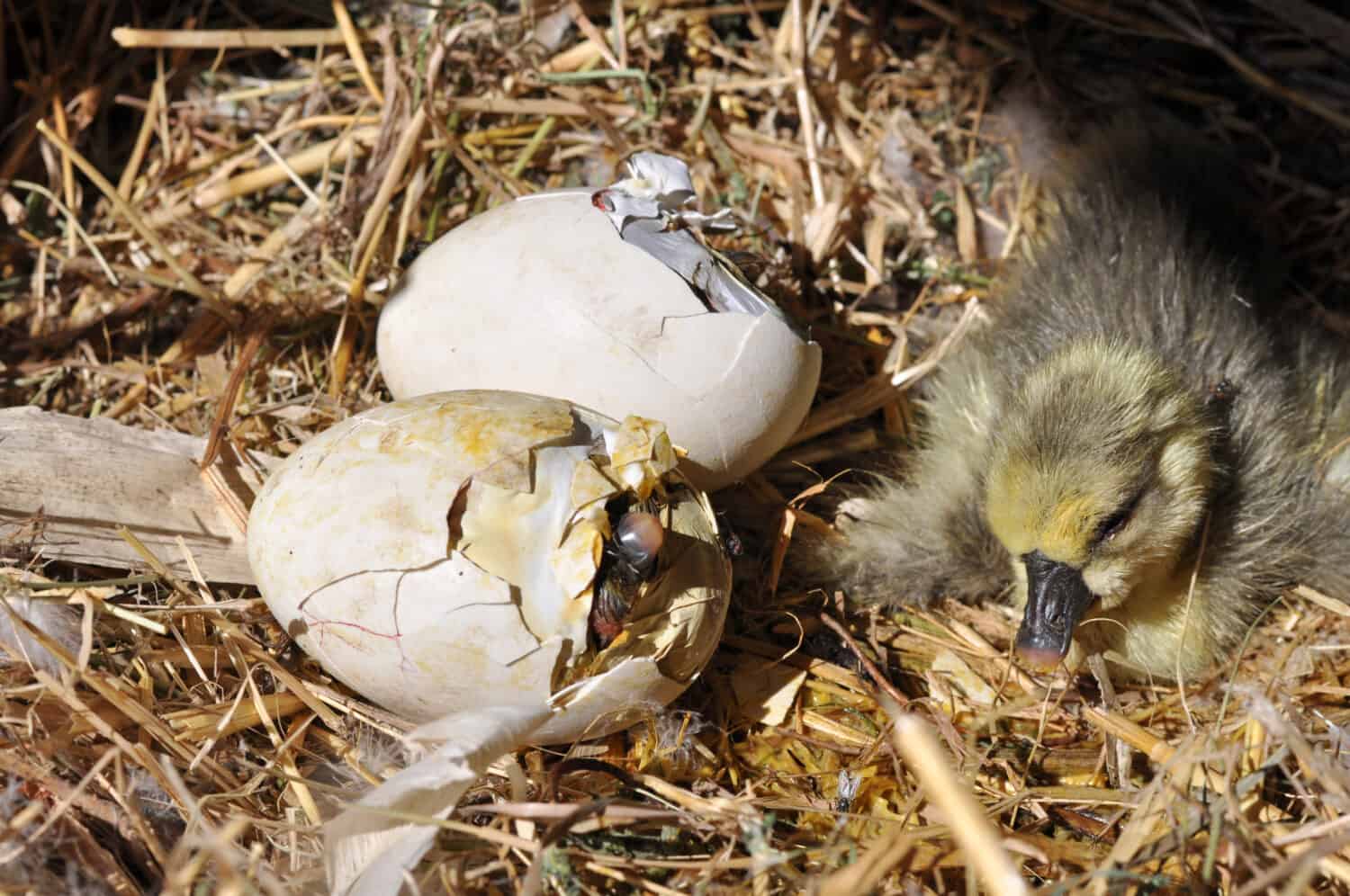
Baby goslings use their egg tooth to help them break out of their eggs.
©Maja Marjanovic/Shutterstock.com
A goose’s mouth is filled with tiny spike structures along its beak and tongue. However, geese do not actually have teeth. Instead, these unique teeth-like structures are called tomia, which they use much like how mammals use teeth.
Although adult geese don’t have teeth, baby geese are born with a unique egg tooth. This single tooth-like horn is found on the gosling’s upper bill, and it is only there for the first few days of life. When it is time to hatch, the baby goose uses its egg tooth to puncture the eggshell. It gradually works its way around the entire egg until it is finally able to break out. The hatching process could take a baby goose anywhere from a few hours to a couple of days.
4. Baby Geese Eat All by Themselves

Geese forage and graze for food, primarily eating various types of vegetation.
©Toby Parkes/Shutterstock.com
As soon as they hatch from their eggs, baby goslings are fully capable of foraging and nourishing themselves. So, unlike many other bird species, goose parents tend to take a rather hands-off approach. However, they still stick around and help to guide the goslings towards suitable food sources.
By picking at the undergrowth, goose parents demonstrate how and what to eat. Baby goslings eagerly follow their parents’ cues, but also demonstrate their own curious natures as they experiment with pecking at different types of grasses and vegetation. As they grow, they adopt the same diverse diet as their parents, which includes grasses, seeds, grains, roots, berries, bulbs, and aquatic plants. Some species also eat small invertebrates, fish, and crustaceans.
5. Baby Goslings Can Swim within the First 24 Hours

Baby goslings are built for water, but still need guidance from their parents.
©Jim Cumming/Shutterstock.com
When baby geese are born, they are about 5 to 7 inches tall and weigh less than 4 ounces, depending on the species. Even with their tiny bodies, however, goslings are well-developed and typically leave their nest within just 24 hours! In addition, they are excellent swimmers and can take to the water within the first several hours after hatching. Baby geese have webbed feet that help them paddle through the water with ease. Some larger species of goose can even dive within the first few days.
6. Baby Geese Have Attentive and Protective Parents

Mother geese can recognize their babies by their unique calls.
©Flagman_1/Shutterstock.com
Geese are monogamous, forming lifelong pairs that stay together throughout the year. During their nesting season, geese pairs eat more and become much more defensive and dominant. Once their baby geese hatch, both parents stick around to care for them. Male geese tend to take a more active role in defending the nest and goslings for several weeks. Some geese pairs raise the goslings by themselves, while others join together with additional couples to raise multiple groups of babies together.
7. Baby Geese Band Together in “Gang Broods”
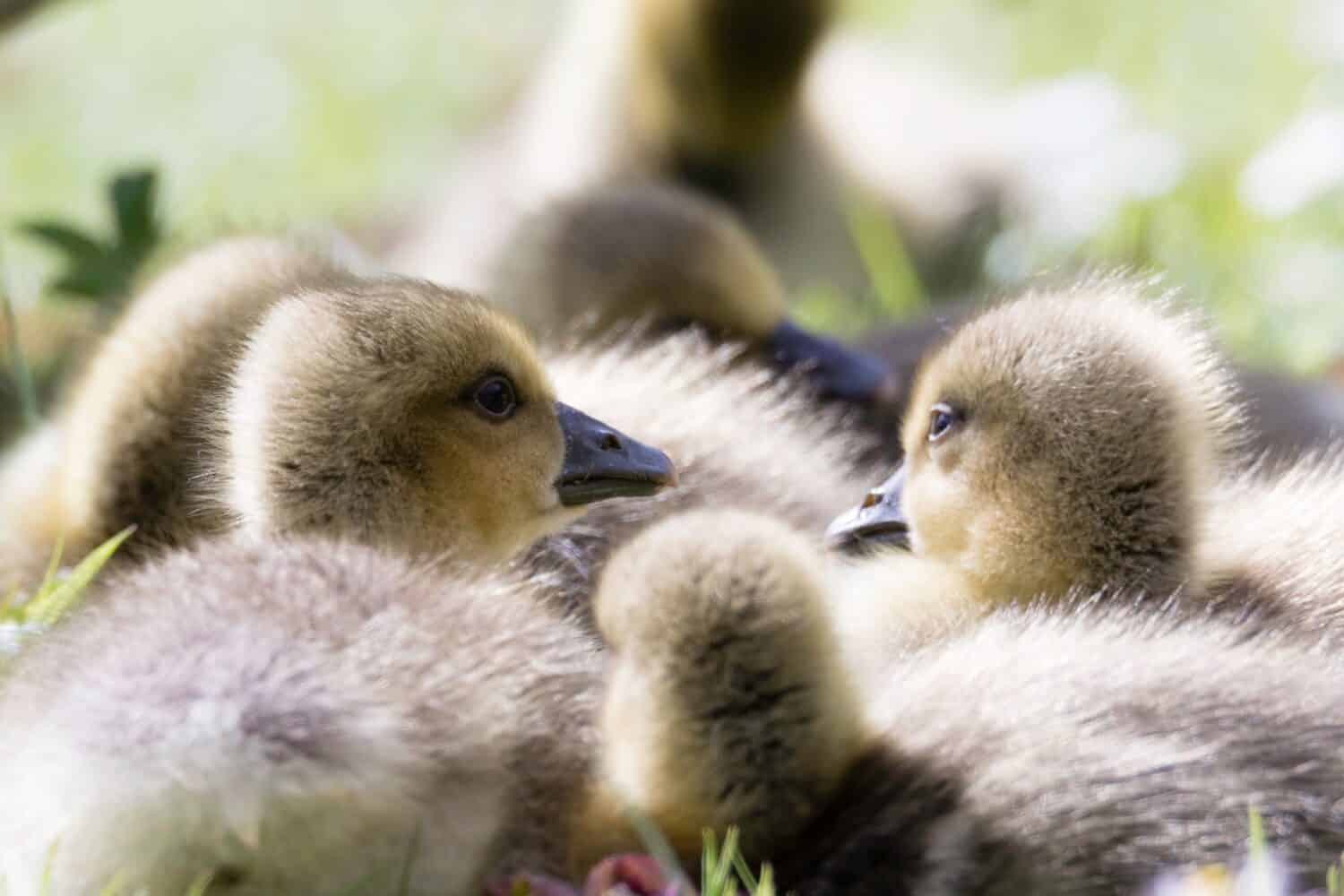
Sometimes non-breeding geese join gang broods and help protect the baby goslings.
©Lizzie Lamont/Shutterstock.com
As baby geese grow and develop, many of them will congregate together with other broods or groups of goslings, forming what is known as “gang broods”. Gang broods can have anywhere from 20 to 100 goslings following just a few adult geese. Family groups, which include the parents, offspring from that year, and sometimes a couple of goslings from the previous year, also tend to stick together well into the winter season.
8. Baby Geese Grow Super Fast
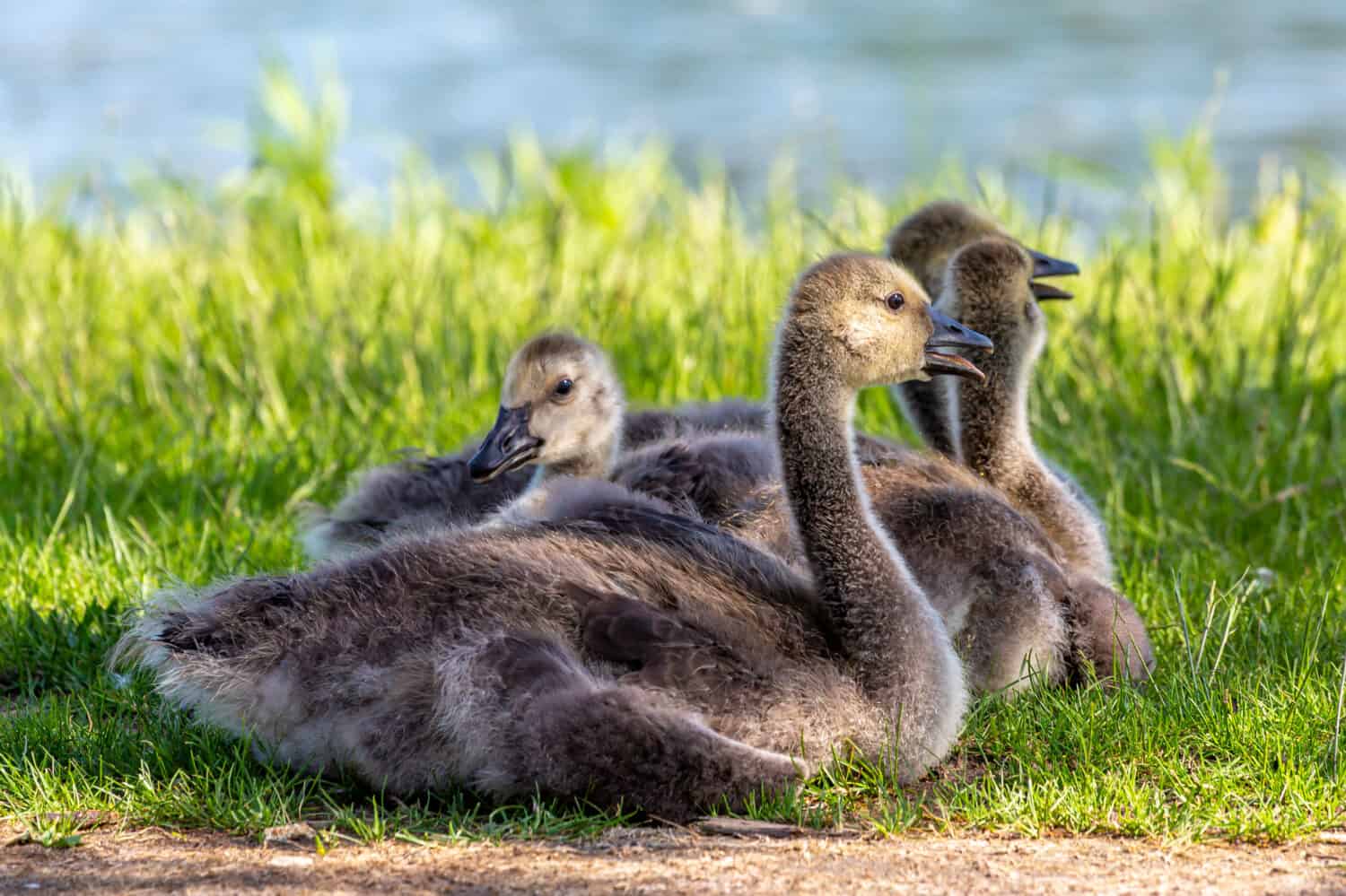
While their juvenile feathers are growing, goslings can look fuzzy and patchy.
©David McIntosh/Shutterstock.com
Within just a week or two after hatching, goslings will nearly double their size. Between 20 to 30 days, their adorable yellow bodies begin to molt, and the young goslings lose their fluffy down feathers and grow new juvenile feathers. Then when they are around four to eight weeks old, the goslings begin to grow flight feathers, eventually fledging and taking their first flight. Juvenile geese have duller colors with less contrast than their parents. They won’t grow adult feathers for at least a year or more.
9. Goslings Are Very Social Animals
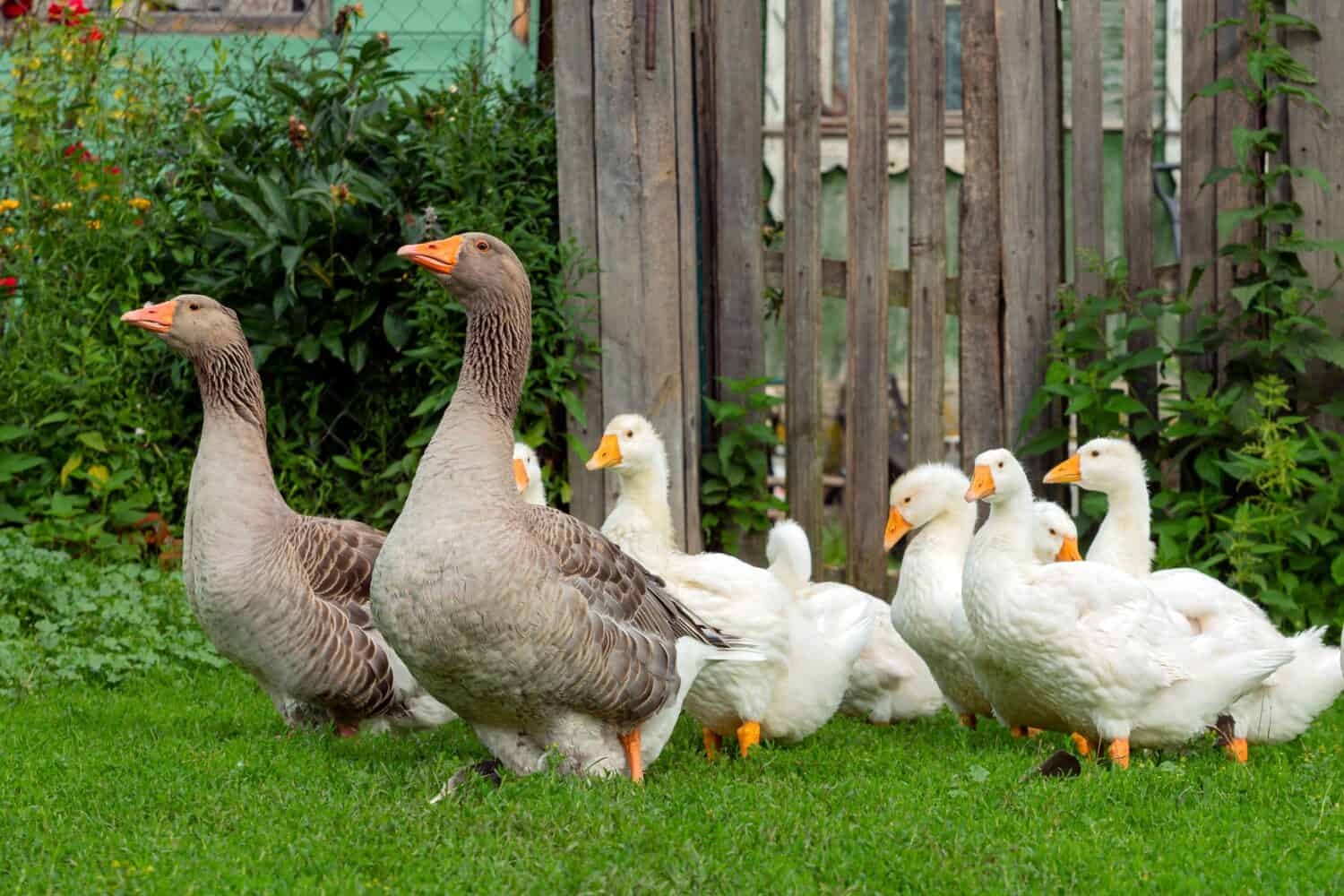
Geese are very social animals and enjoy spending time with their families.
©Kanyshev Andrey/Shutterstock.com
For safety and survival, goslings stick close to their family groups. By observing and imitating their parents’ actions, baby geese learn vital survival skills and essential behaviors, like how to locate food and water, avoid predators, and interact with other geese.
Goslings are highly sociable creatures and establish strong bonds with their parents and siblings. They love to play and often spend time swimming, diving, and chasing each other around. Some even take care of one another’s feathers through grooming and mutual preening. Goslings communicate using a diverse range of vocalizations like whistles, grunts, and honks. They also use body language cues like tail wagging and head bobbing.
10. Baby Geese Imprint and Stay with Their Families for a Long Time
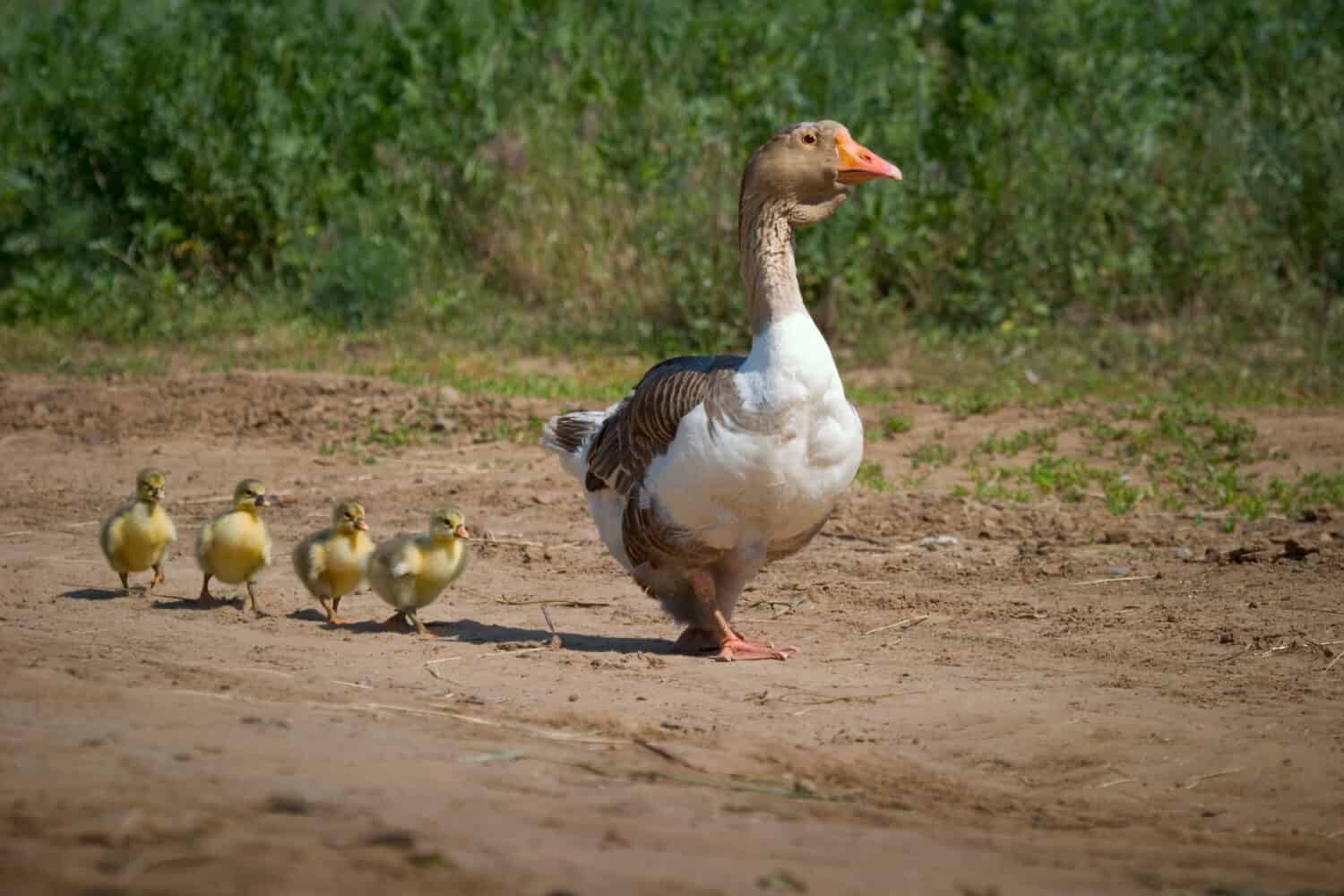
Baby geese will follow whoever they have imprinted on.
©Serhii Hrebeniuk/Shutterstock.com
Goslings have an adorable habit of sticking close to their parents wherever they go, and emit loud honks if they become separated. This strong attachment is a result of imprinting. Goslings begin to imprint shortly after they hatch. When baby geese imprint on something, they will follow it around and seek nurturance from it. Imprinting plays a crucial role in the immediate and long-term survival of these birds, ensuring that they follow the appropriate adult, who provides them with safety and guidance. Baby geese usually imprint on their mothers, but they have been known to imprint on humans as well. Some geese even form strong bonds with humans.
Baby geese stay with their family unit for the better part of a year, and often even longer. In the fall, the young geese join their parents for their first migratory journey. Once they return in the spring, the goslings — now juvenile geese — form juvenile flocks but continue to stay close to their parents until they are at least two years old.

Although they are quite small when they are born, Chinese goslings will double in size in just the first week.
©Leena Robinson/Shutterstock.com
The photo featured at the top of this post is © Toby Parkes/Shutterstock.com
Thank you for reading! Have some feedback for us? Contact the AZ Animals editorial team.






